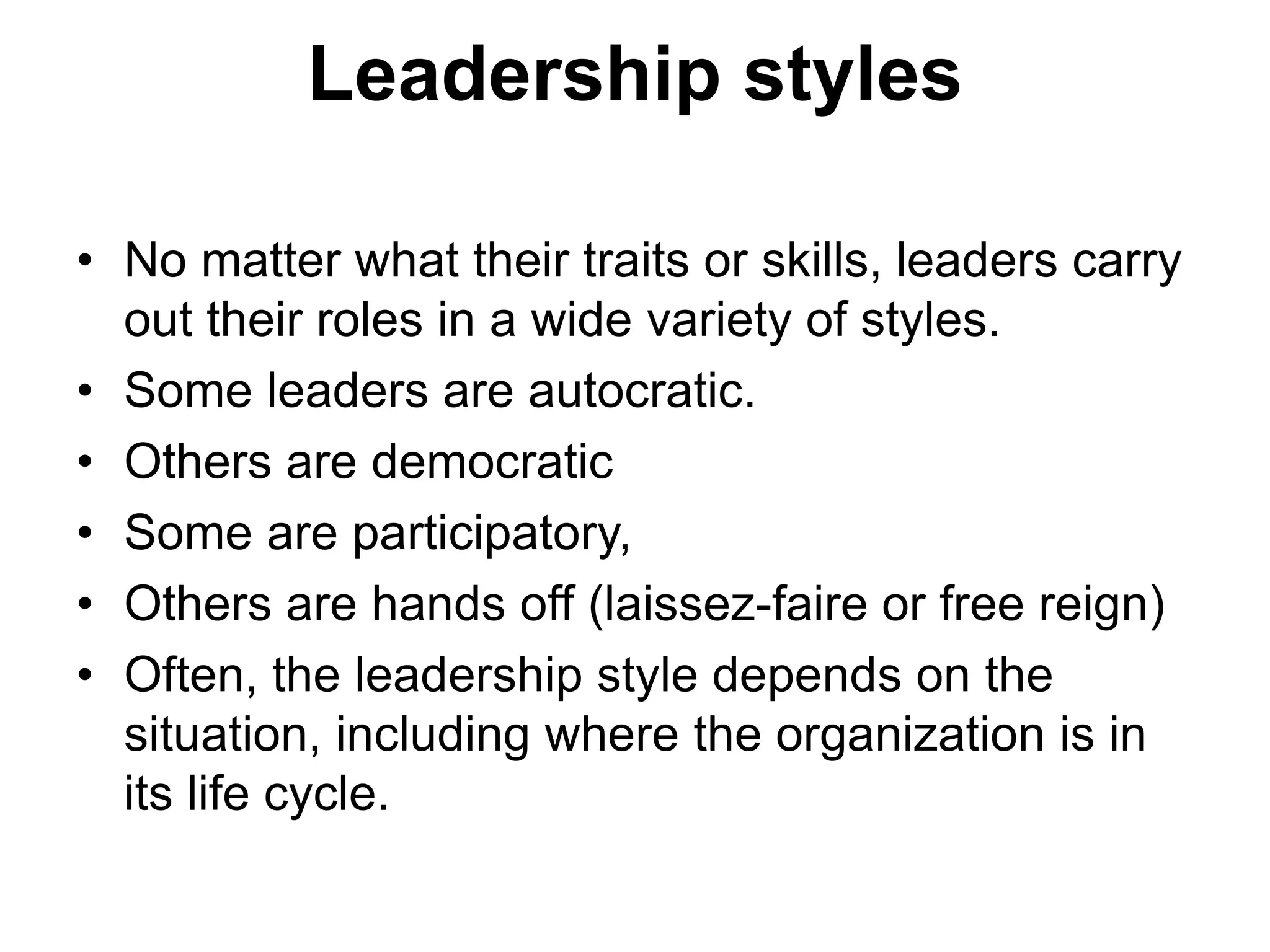This document provides an overview of various leadership models and concepts. It begins by defining leadership and distinguishing between a leader and leadership. It then covers several models of leadership including the trait model, behavioral models like the Michigan and Ohio studies, and the leadership grid. Situational or contingency models are also discussed, including the leadership continuum, Fiedler's contingency theory, and other situational approaches. Related topics covered include power and leadership, developing leadership skills, and the differences between leadership and management.











































































